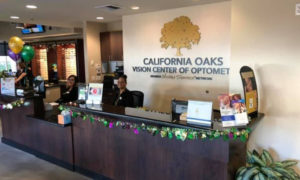By Jennifer Jabaley, OD

Sept. 28, 2016
Envision an Ideal Day in Your Office
If you had a perfect day in your practice, it would probably look something like this: All available appointments are booked. The staff shows up on time, joyful and eager to work. No one tries to microwave their Pop-Tart in the aluminum foil and sets off the fire alarm. Your patients show up on time, pleasant, but not too chatty. Refractions are easy, no major medical surprises, and everyone wants progressives.
To be honest, you probably just had a day similar to the one I had: Some patients arrived early, others late, so they all converged on the front desk at once. A difficult visual field threw the technician behind schedule. Five medical walk-ins, ranging from flashes and floaters to metal in the eye, were squeezed in between your booked appointments. And all your patients wanted to talk about politics. And, suddenly, you were running 45 minutes behind schedule.
A 2009 study estimated the average wait time to see a health care provider is 24 minutes, but on days like the one described above, I know the wait is longer. A recent study by Software Advice found that 97 percent of patients are frustrated by wait times at a doctor’s office. There’s even been documented cases of patients suing doctors for excessive tardiness, or sending a bill to the doctor to account for their time spent waiting. So, how can we tackle this issue to better improve our office flow? And what steps can we take to appease patients when we do run behind?
Three Ways to Increase Efficiency
Have the Patient Start at Home
Make a demographic, or history form, available to your patients online so they can print it and fill it out ahead of time. This can save valuable time between arrival and the start of the visit. Have your staff get all insurance information ahead of time on the phone to avoid misunderstandings and complications.
Last week I took my son to the ear, nose and throat doctor. We have over an hour drive to her office, worse if there’s traffic. Upon arrival, the front desk person asked for my insurance card and co-pay, and then informed me that they no longer accepted my HMO. We have used this doctor for over five years. She has performed two surgeries on my son. We have had Blue Cross Blue Shield the entire time, but like most people, our individual plan has varied from year to year. But when making the appointment on the phone, she failed to collect that information. It was an excellent example of how the pre-planning stage of an appointment can impact the patient experience.
Map the Patient Journey
Often in industry, when aiming to solve workflow issues, a time-tested technique used is to design a flow map. List all the steps a patient goes through in your office from check-in and pre-test to exam and optical. It can be extremely helpful to create a diagram to identify the physical path your patients walk through. A visual map can help identify bottlenecks in flow, or areas of wasted time.
For example, in our practice we have an internal waiting room for when patients are pre-tested, but there is no available exam room. However, we have many medical walk-ins, and the technicians were also bringing those patients to the internal waiting room, and it became an area of congestion and confusion. Realizing this area of concern, we went one step backward on our flow chart and handled the situation from the front desk, noting that walk-ins should stay in the front waiting room until they can be walked directly to an exam room.
Add to Your Technology Toolbox
In optometry and in life, the right tools can increase efficiency. Consider how technology could help streamline your patient flow. Dilation can be a large obstacle to efficiency in an optometric practice. For some patients dilation is the best course of action, however, there are tools available like digital retinal imaging which would allow thorough retinal evaluation without the time drain of dilation.
By working with your staff to take a closer look at the office work flow, identifying areas of concern and implementing solutions, you can create a streamlined, smooth process. But there still will be days when chatty patients, or unexpected obstacles, will create longer wait times for your patients. How can you manage a patient who is frustrated after waiting?
Three Ways to Increase Satisfaction
Keep Patients Occupied
For some time now, doctor’s offices have utilized TVs in the waiting rooms as a way to keep patients happy. Some offices use a television as an opportunity to display educational videos or product promotion, in addition to providing entertainment. In this day and age, providing free WiFi service, so patients can use a smartphone or device, is a nice added amenity.
Set Expectations and Provide Updates
Have your staff keep patients informed of expected wait times by saying, “Dr. X is running about 30 minutes behind.” Explain that there have been walk-in emergencies, or issues with the computers, or whatever the reason for the delay. Providing updates such as, “You’re next in line to be seen,” can appease a frustrated patient.
An added touch that we do at our office is to offer coffee and water to our patients as they wait. A simple drink goes a long way in keeping everyone content.
Apologize
Anytime a patient has had to wait more than a few minutes to see me, I always acknowledge it with, “I apologize that you had to wait.” Then I thank them for their understanding. Patients want to feel like their time is valuable, too, and a simple acknowledgement and appreciation goes a long way in securing a loyal, lasting doctor/patient relationship.
Jennifer Jabaley, OD, is a partner with Jabaley Eye Care in Blue Ridge, Ga. Contact: jabaleyjennifer@yahoo.com



























